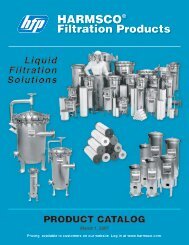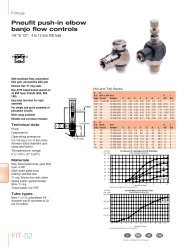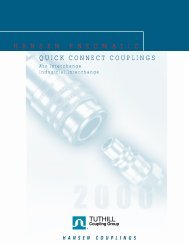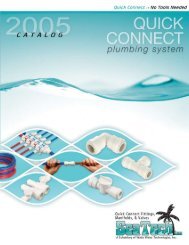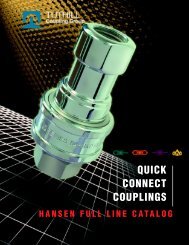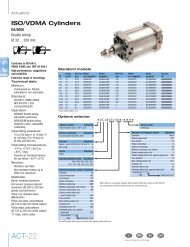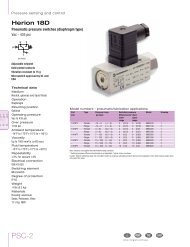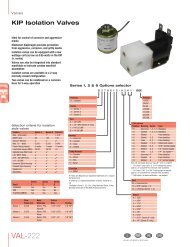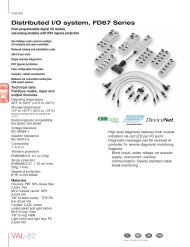FilmTec Technical Manual - Chester Paul Company
FilmTec Technical Manual - Chester Paul Company
FilmTec Technical Manual - Chester Paul Company
You also want an ePaper? Increase the reach of your titles
YUMPU automatically turns print PDFs into web optimized ePapers that Google loves.
With lime softening, barium, strontium, and organic substances are also reduced significantly. The process requires a reactorwith a high concentration of precipitated particles serving as crystallization nuclei. This is usually achieved by upflow solidscontactclarifiers. The effluent from this process requires media filtration and pH adjustment prior to the RO elements. Ironcoagulants with or without polymeric flocculants (anionic and nonionic) may be used to improve the solid-liquid separation.Lime softening should be considered for brackish water plants larger than 200 m 3 /h (880 gpm). More details are described inwater treatment textbooks. /3, 4, 5/2.3.7 Preventive CleaningIn some applications, scaling is controlled by preventive membrane cleaning. This allows the system to run without softeningor dosage of chemicals. Typically, these systems operate at low recovery in the range of 25%, and the membrane elementsare replaced after 1–2 years. Accordingly, these systems are mainly small single-element plants for potable water from tapwater or seawater. The simplest way of cleaning is a forward flush at low pressure by opening the concentrate valve. Shortcleaning intervals are more effective than long cleaning times (e.g., 30 seconds every 30 minutes).Cleaning can also be carried out with cleaning chemicals as described in Section 6. In batch processes like waste watertreatment, cleaning the membranes after every batch is common practice.The cleaning procedure, cleaning chemicals, and frequency of cleaning need to be determined and optimized case by case.Special care has to be taken not to allow a scaling layer to develop over time.2.3.8 Adjustment of Operating VariablesWhen other scale-control methods do not work, the operating variables of the plant have to be adjusted in such a way thatscaling will not occur. The precipitation of dissolved salts can be avoided by keeping their concentration below the solubilitylimit. This is accomplished by reducing the system recovery until the concentrate concentration is low enough.Solubility depends also on temperature and pH. In the case of silica, increasing temperature and pH increases its solubility(see Section 2.4.7). Silica is usually the only reason for considering adjustment of operating variables for scale controlbecause these adjustments have economic drawbacks (energy consumption) or other scaling risks (CaCO 3 at high pH).For small systems, a low recovery combined with a preventive cleaning program might be a convenient way to controlscaling.2.4 Scaling Calculations2.4.1 GeneralScaling calculations must be carried out in order to determine whether a sparingly soluble salt presents a potential scalingproblem in an RO system. The calculation procedures described in this section are adapted from the corresponding ASTMstandards, cited in the references /6, 7, 8/. To determine the scaling potential, you need to compare the ion product IP c of theconsidered salt in the concentrate stream with the solubility product K sp of that salt under conditions in the concentratestream. Generally, scale-control measures are not needed if IP c < K sp .The ion product IP of a salt A m B n is defined asIP = [A] m [B] n Eq. 1where:[A], [B] = molal concentrations of the corresponding ionsPage 28 of 180 ® Trademark of The Dow Chemical <strong>Company</strong> ("Dow") or an affiliated company of Dow Form No. 609-00071



